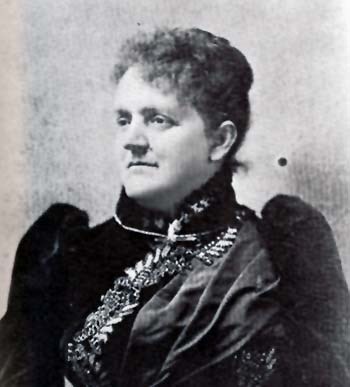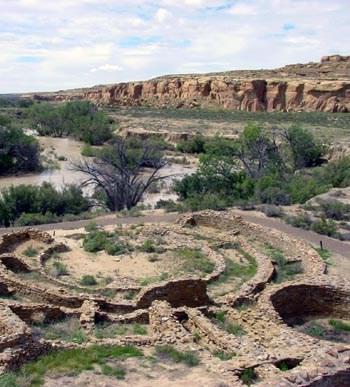Last updated: April 9, 2025
Article
Archeology and Preserving America's Past

Just as everyday people campaigned to conserve wilderness in the American West, they also advocated for archeological and historic sites to be preserved for all people.
Throughout the history of the national parks and the National Park Service, archeology has revealed unique information about the people, places, and stories of America's past. Archeology, too, has helped to make the democratic spaces of national parks even more so, through revelations about all peoples and their contributions to the American story.
Discovery and Dispute

In the late 19th century, European Americans set into motion the preservation of ancient Native American structures in the Southwest and Civil War battlefields east of the Mississippi. Philanthropists, scientists, and veterans rallied around America's historic places. Some scouted for artifacts to build personal collections or to sell. Others sought a grand national story. And others promised to fulfill Americans' need to remember past conflicts while reestablishing national unity. These related but competing interests threatened to compromise archeological places.

Mary Hemenway funded the Hemenway Southwestern Archaeological Expedition to Casa Grande in Arizona from 1887 to 1888. Excavations took place at the "Great House" and surrounding Hohokam sites. Extensive vandalism and archeologists' urging inspired Hemenway to campaign for Federal protection of the ruins. Casa Grande became America's first archeological reservation in 1892. President Woodrow Wilson proclaimed Casa Grande Ruins a National Monument on August 3, 1918.

In the 1880s, the Wetherills' excavations at Mesa Verde in Colorado set off dispute between local amateur archeologists like themselves and academically trained scientists. The Colorado Federation of Women's Clubs became concerned about the vandalism and pothunting. Their advocacy led to Congressional approval of Mesa Verde National Park in 1906. Mesa Verde joined the National Park Service in 1916 and UNESCO's World Heritage List in 1978.

Soldiers in 1863 fought for a key railway center and gateway to the Confederacy at Chattanooga and Chickamauga in Tennessee. Decades later, veterans from the Union and the Confederacy worked together as the Chickamauga Memorial Association to preserve the battlefields as its landmarks disappeared. Congress passed legislation to authorize Chickamauga and Chattanooga as America's first national military park in 1890, the same year as Yosemite National Park. It joined the National Park Service in 1933.

The Union's victory at Gettysburg, Pennsylvania in 1863 ended Robert E. Lee's invasion of the north. Residents of Gettysburg established an association in 1864 to preserve portions of the battlefield as a memorial to Union troops. Veteran reunions and anniversaries kept the landscape a site of remembrance. The Federal government assumed control of the cemetery in 1872, the same year Yellowstone was designated a national park. The battleground became a national military park in 1895. It joined the National Park Service in 1933.
Legislative Landmarks

Concern about endangered archeological places led to two important milestones: the Antiquities Act of 1906 and the Organic Act of 1916. The Antiquities Act empowered the President to set aside historic and scientific places as national monuments. The Organic Act created the National Park Service. It charged the NPS to conserve natural and historical places, provide for their enjoyment, and leave them unimpaired for future generations. The NPS became steward of 14 national parks, 21 national monuments, and a reservation. Among them were Casa Grande, Mesa Verde, and national monuments transferred from the Forest Service.

Archeologist Edgar Lee Hewett collaborated with Congressman John Lacey on the Antiquities Act of 1906 for the preservation of Southwestern antiquities. President Theodore Roosevelt used the Act to proclaim 18 national monuments. Six were ancient archeological places in the Southwest. Others established for natural features, like Grand Canyon, have since demonstrated their archeological significance, as well.

Edgar Hewett's Southwestern archeological surveys brought the so-called Montezuma Castle in Arizona to his attention. Aggressive pothunting techniques—like the use of dynamite—threatened the ancient structures and the artifacts they contained. Hewett supported the establishment of the national monument in 1907. Montezuma Castle joined the National Park Service in 1916.

Losses through vandalism and private collecting led to the designation of Chaco Canyon National Monument in New Mexico. Its proclamation in 1907 referred to the extensive communal or pueblo ruins as possessing "extraordinary interest because of their number and their great size and because of the innumerable and valuable relics of a prehistoric people which they contain." Chaco Culture joined the National Park Service in 1916 and UNESCO's World Heritage List in 1987.

Other kinds of historical areas joined ancient Native American structures in the NPS system. Tumacacori National Monument in Arizona was designated a national monument in 1908 to preserve an 18th-century Spanish mission church and the community grounds around it. Archeologists have found evidence of pre-mission O'odham and prehistoric Hohokam and Trincheras cultures, as well as post-mission settlement. Tumacacori joined the National Park Service in 1918.

Tracing a line from the Antiquities Act of 1906 to the Organic Act of 1916, a number of national monuments established for their archeological significance joined the National Park System, whose mission was stated as, "....to conserve the scenery and the natural and historic objects and the wild life therein and to provide for the enjoyment of the same in such manner and by such means as will leave them unimpaired for the enjoyment of future generations." In 1927, Jesse Nusbaum, an archeologist and superintendent of Mesa Verde National Park, was named the first lead archeologist for the NPS.
An Expanding System

After 1916, the NPS expanded with new Eastern parks and a broadened thematic and geographic scope. NPS leaders aimed to reach a wider constituency than possible through Western wilderness parks alone. In 1933, national monuments held by the U.S. Forest Service; the National Capital Parks in Washington, DC; and battlefields, forts, and monuments from the War Department all joined the NPS. The Historic Sites Act of 1935 led to additions of even more historical parks through the mid-century. Park types diversified from ancient structures and battlefields to mounds, forts, missions, and presidential birthplaces.
The NPS was now a leader in historic preservation, and archeology provided park planners and visitors with information unknowable through texts or living peoples. But archeology in the parks also had other benefits. Archeology provided jobs during the Great Depression. Historical architects based park development schemes on archeological finds. Rangers and archeologists worked together to interpret excavations to the public. Parks became laboratories for archeological method and theory. NPS archeology was further proof of the broad benefits of national parks to the nation.

Joining acreages in the West, the NPS established parks preserved for their natural values in closer proximity to the more densely populated eastern U.S. In 1916, Sieur de Monts National Monument (now called Acadia National Park) in Maine became the first national park east of the Mississippi River. Archeologists have found Native American settlements and shell middens of ceramics and tools, as well as evidence of European settlements.

When the federal government sought to collect land in the Shenandoah Mountains for a new park, numerous mountain communities asserted their right to stay in their homes. Ethnographers conducting research in the 1920s in the region justified displacement of the mountain people by judging them to be primitive, unintelligent, and culturally and technologically isolated. Archeology has dispelled that myth.

Parks and preserved spaces across the District of Columbia were organized into the National Park Service in 1933. Some had made sigificant contributions to archeology since the late 19th century. Rock Creek Park, for example, had helped to resolve an early debate about the antiquity of human presence in the Americas.

Mound City Group was transferred to the NPS from the War Department, which had used the site for a massive World War One infantry training facility. The military's activities leveled many mounds and sites first documented by Squier and Davis in the 1840s. When the war was over, archeologists studying burials and sites below ground recovered evidence of ceremonial and social activities in the Ohio Valley dating between 200 BC to AD 500.

Between 1933 and 1943, Federal work relief programs such as the Civilian Conservation Corps and the Works Progress Administration employed laborers who built roads, trails, visitor comfort stations, and other amenities in the national parks. Laborers also worked with NPS archeologists to excavate sites and process collections. Ocmulgee, Fort Laramie, and Morristown were among the NPS units that employed work relief laborers to conduct archeology.

Post-war nationalism inspired the public to visit the national parks, especially the historic areas. Archeologists recovered the actual foundations of George Washington's birthplace home. Jamestown Island in Virginia saw pioneering work in historic sites archeology to recover the first permanent English settlement in the New World. Archeology at Independence in Pennsylvania shows where independence became more than an idea.
Present Day

After the mid-century, the destructive effects of post-war urban and infrastructure development and social struggles for equality affected park archeology. Laws such as the National Historic Preservation Act of 1966 and the Archaeological Resources Protection Act of 1979 strengthened the protection of archeological places. New parks built on traditional NPS site types but also reflected ethnic diversity, women's history, and labor; while existing parks drew on archeology to develop more inclusive interpretations of untold stories. Archeology showed that everyday people make extraordinary contributions.

Yellowstone National Park in Wyoming, Montana, and Idaho is best known for its extraordinary wild landscape and geysers, hotsprings, and wildlife species. From ancient hunters to European explorers, hotel entrepreneurs to tourists, archeology shows that America's first national park has inspired people for thousands of years.

Soldiers converged on the Robinsons' house and farm during the First and Second Battles of Manassas, Virginia in 1861. The Robinson family, members of whom were free and enslaved, prospered while slavery persisted in the national debate. Manassas National Battlefield Park was established in 1940 to commemorate the events that took place on the landscape. Archeologists working with the Robinsons' descendants in the 1990s recovered evidence of their ancestors' resilience and spirit at a time of significant change in America.

Archeological evidence of extraordinary times make the past more real to visitors today. The U.S. government incarcerated Japanese Americans at Manzanar during World War II. It became a national park in 1992. Archeologists working with descendants located structures, gardens, and artifactual evidence of a hybrid Asian and American culture. Together, they show the everyday lives of people whose rights as citizens were affected in a time of crisis as a result of their ethnic identity, and remind us of the park's refrain: "Never again."

Free and enslaved Africans were not buried within New Amsterdam's 18th-century city walls; instead, they were interred in a separate place. The African Burial Ground National Monument was established in 2006 on the basis of archeological rediscovery of the burying ground. Forensic study underscored the impact of enslaved people's lived experience on their bodies, while artifactual analysis demonstrated their retention and practice of cultural rites from their homelands in the New World. Today, the national monument provides a place to reflect on the historical legacy of African slavery.
